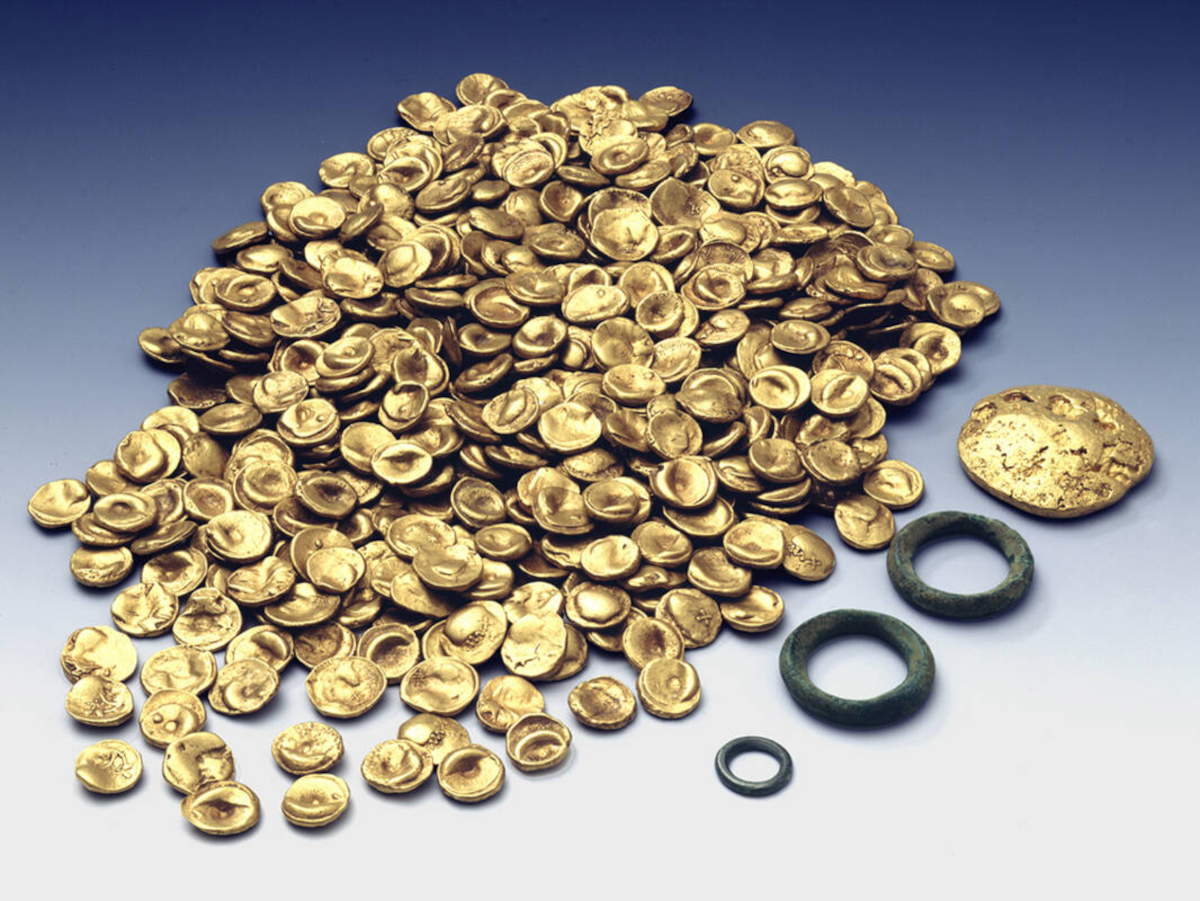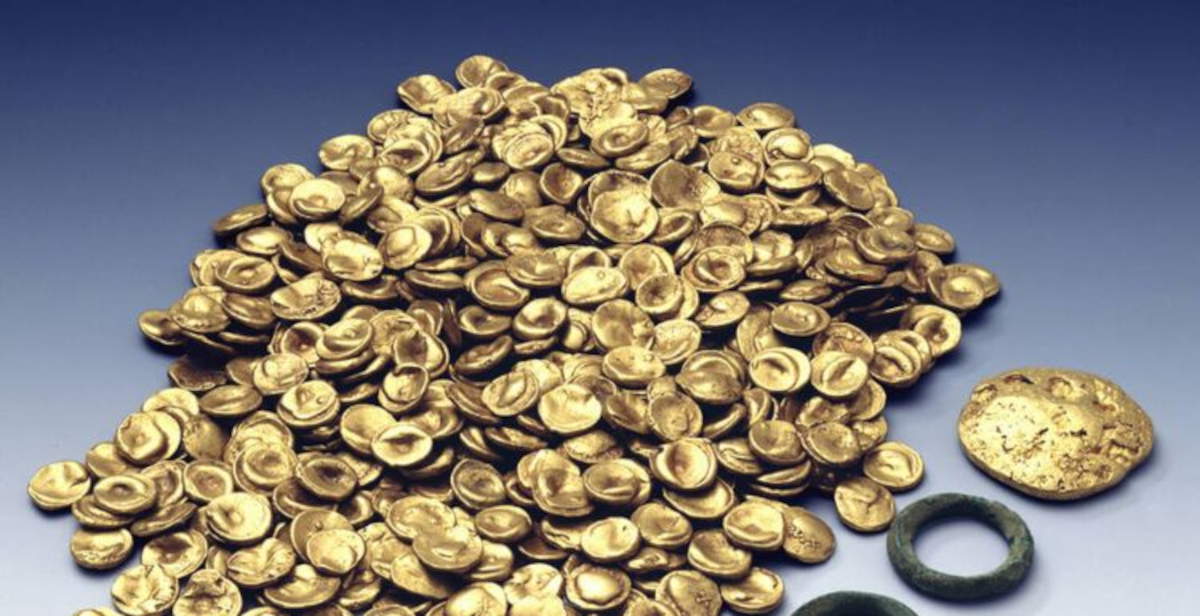On Tuesday, July 29, 2025, the regional court in Ingolstadt, Germany, handed down the verdict in the trial over the theft of the Manching Celtic treasure, which was stolen from the Manching town’s Roman-Celtic museum, the Kelten- & Römermuseum Manching, in November 2022. The stolen coins include 483 Celtic gold pieces dating back to the first century B.C., plus three other specimens of different provenance. The presiding judge, Konrad Kliegl, justified the decision in the courtroom in great detail, imposing harsh prison sentences on three of the defendants, believed to be part of the so-called Schwerin group, which was also active in other crimes. The fourth defendant was acquitted with specific reference to the Manching incident, but convicted for his participation in other criminal activities of the same gang.
The main defendant was sentenced to 11 years in prison for aggravated gang theft and other related crimes. According to the prosecution, he was the initiator and material executor of the museum break-in, during which one of the most important archaeological artifacts in southern Germany was stolen. Two of his accomplices were sentenced to 8 years and 4 years and 9 months, respectively. The fourth defendant, on the other hand, was acquitted in connection with the theft of the Celtic treasure, as the court found that his direct involvement in the action was not sufficiently proven. However, the same defendant will have to serve 7 years in prison for participation in other crimes committed by the gang. In addition to the sentences, the court ordered compensation of 1.3 million euros from the defendants found guilty. The amount corresponds to the estimated value of the Celtic treasure taken from the museum, although, as pointed out in the courtroom, the cultural damage is far greater and in fact impossible to quantify.
“As part of an extensive and detailed collection of evidence,” the Ingolstadt court announced, “involving nearly 120 witnesses and about 20 experts, the Chamber was convinced that all the defendants were members of a nationally active gang. Among other things, the following circumstantial facts were decisive for this: 18 pieces of gold found, which the experts concluded could be attributed to the Celtic treasure in Manching, tools of the crime seized from the defendants, radio cell and DNA results, evaluation of surveillance videos and routine modus operandi and the like.”
The pronouncement attracted a great deal of press attention, with the court room nearly full. Also present were the museum’s director, Tobias Esch, and the mayor of Manching, Herbert Nerb. Both expressed to the press some satisfaction with the outcome of the trial, while reiterating how the return of the treasure remains the essential and unfortunately still missing element. Indeed, the Celtic gold treasure was the museum’s main attraction, with a historical and cultural value considered irreplaceable.

To this day, in fact, much of the hoard remains untraceable. Only 18 small lumps of gold, each consisting of four melted coins, were recovered when one of the accomplices was arrested. The provenance of the artifacts has been confirmed by experts, but the quantity is minimal compared to the entire treasure taken. Despite the investigation, authorities have not yet been able to identify the destination of the rest of the stolen gold. The fear, shared by investigators and museum experts, is that the treasure may have been melted down and dispersed on the black market, thwarting any chance of recovery.
In any case, the ruling is not yet final. All defense lawyers have announced their intention to appeal, challenging both the indictment and the severity of the sentences. As a result, the proceedings may continue in the coming months at the relevant court of appeals. However, the defendants currently remain in pre-trial detention, as the court saw a real risk of absconding and contamination of evidence. The prosecutor’s office has also expressed its intention to analyze in detail the written reasons for the partial acquittal of the fourth defendant, reserving the possibility of appealing against that part of the ruling. The case thus continues to remain open in several legal, investigative and cultural respects.
The theft, which occurred on the night of Nov. 21-22, 2022, had caused a great stir in Germany and throughout Europe. The thieves, in a quick and well-organized action, had deactivated the alarm system and breached the museum’s armored display cases, taking possession of the gold treasure dating back to the Iron Age, belonging to the area’s Celtic culture. The operation had lasted only a few minutes and had left no immediate useful traces. However, the subsequent investigation had made it possible to reconstruct the gang’s movements, linking it to other similar crimes and eventually leading to the arrests. The treasure’s absence continues to be an open wound for the local community and for Germany’s entire archaeological heritage. Although the convictions represent a milestone in the judicial reconstruction of the events, the final outcome of the case, with the possible recovery of the entire loot, still seems far off. The museum institutions and the City of Manching reiterate the symbolic value of the stolen collection, hoping for further developments that may unearth what was stolen on that night in 2022.
 |
| Germany, stole valuable Celtic coins from a museum: sentences up to 11 years |
Warning: the translation into English of the original Italian article was created using automatic tools. We undertake to review all articles, but we do not guarantee the total absence of inaccuracies in the translation due to the program. You can find the original by clicking on the ITA button. If you find any mistake,please contact us.